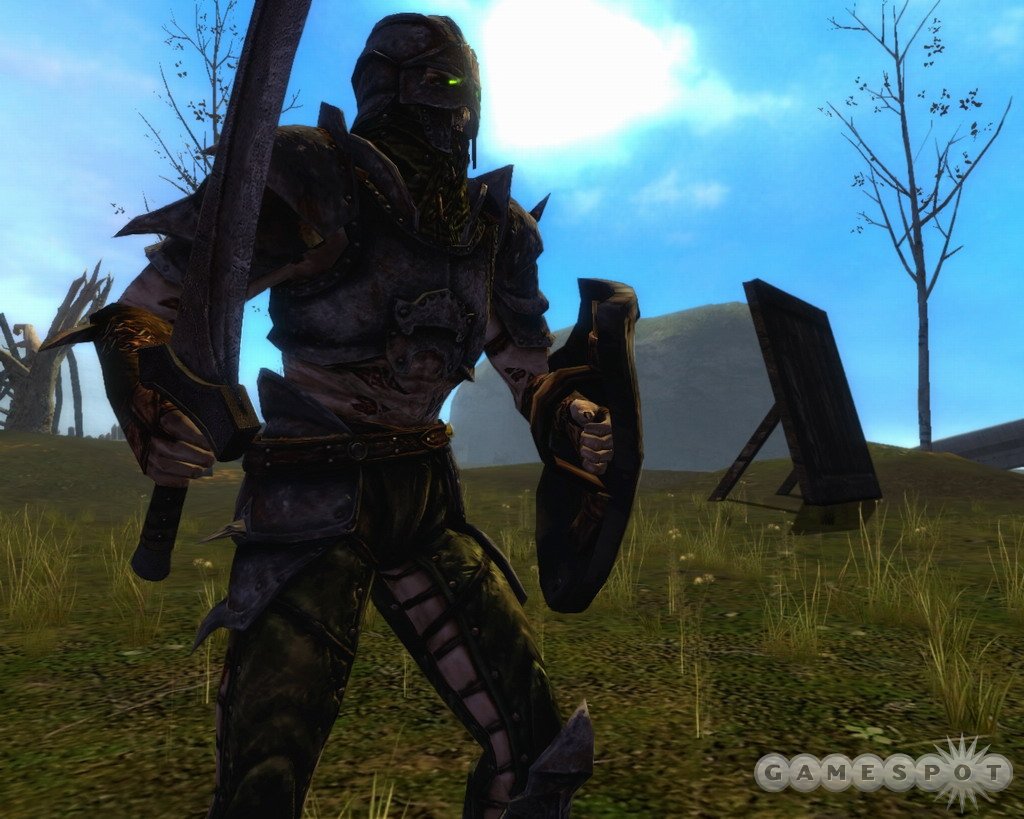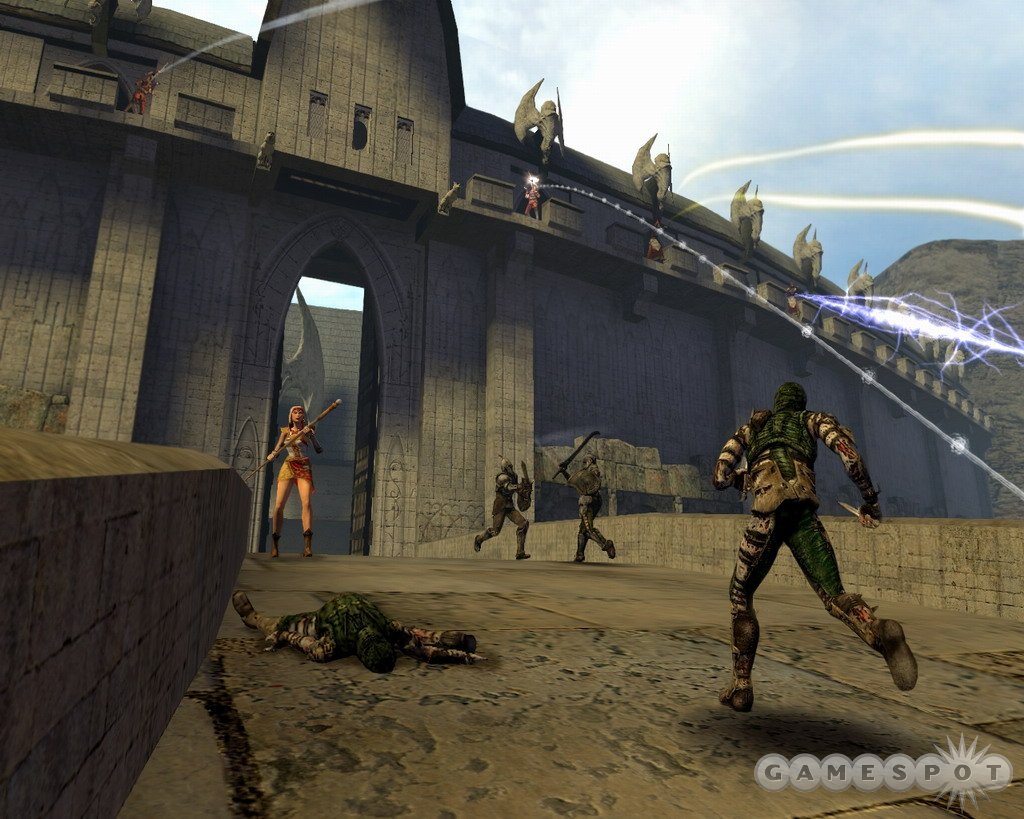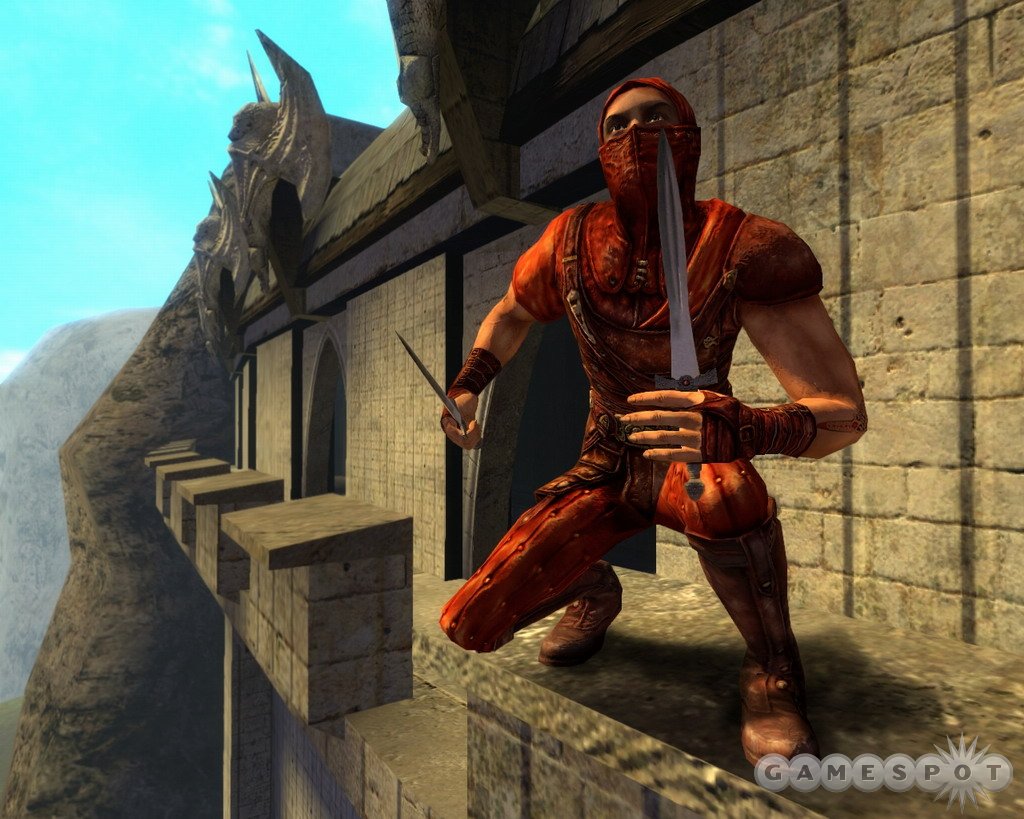Dark Messiah of Might and Magic Q&A - Multiplayer, Crusade Mode, Classes, and More
The producer of this beautiful and promising new action adventure game explains how the multiplayer gameplay will let you battle in an online campaign.
Multiplayer has evolved far beyond the mindless and simple deathmatch games found in the first generation of shooters. Now, the big thing is team-based gameplay, where players have specialized roles and work together toward victory. The multiplayer in Dark Messiah of Might and Magic will be a good example of this. Dark Messiah was one of the action games that stood out at the recent Electronic Entertainment Expo, and this first-person action game blends role-playing and adventure with the Source engine, the same one used to power Half-Life 2 and Counter-Strike Source. With that kind of versatility at its disposal, Ubisoft has two teams working on the game. The first is handling the single-player game, while the second is focused solely on multiplayer. Free to concentrate on online play, the multiplayer team has come up with some innovative new types of gameplay.
Dark Messiah will have two modes, a warfare battle mode where the goal is to seize the opposing team's castle, as well as a dynamic campaign mode called crusade. There will also be two playable factions in the form of the humans and the undead. The warfare battle mode is described as being similar to the conquest mode found in Battlefield games. There are two teams of 16 players each battling for control of the map, and each side has a limited number of respawn tickets. Then there's crusade mode, the online campaign. In crusade, the results of online matches carry over to the next round. If your team wins, you'll advance into enemy territory, and the next match will take place on the next map closest to your ultimate objective. Lose a round, and you'll be pushed back toward your base. The deeper you get into an enemy's territory, the tougher it gets to progress because there are more defenses to aid the defenders. The good news is that your character can level up and gain skills over the course of the campaign, so your new skills and abilities carry over to the next battle. In effect, you become tougher and more powerful, just like in any role-playing game.

As with any good team-focused game, the five playable classes on each team complement one another, so you'll need a balanced team to succeed. First, there's the assassin. Though weak, the assassin makes up for this with stealth, and this class has the ability to move quietly and invisibly to strike the enemy from behind. Also, assassins can set traps for the unwary. Next up is the warrior, the frontline fighter that will battle with sword and shield. Naturally, warriors are stronger, faster, and have more endurance than other classes, but they're limited to melee weapons. Standing off from the frontline is the priest, who supports the team by healing teammates, as well as casting combat spells. As an added bonus, priests can detect invisible opponents, so they're the counter for assassins. The other magic unit is the mage, responsible for dishing out the offensive spells. Mages, like priests, need to be defended from harm. Finally, there's the archer, who acts as the sniper of the group.
To learn more about multiplayer, we caught up with Romain de Waubert de Genlis, the producer of Dark Messiah and former designer and producer on Digital Illusions' highly popular Battlefield multiplayer shooters.
GameSpot: Could you tell us about the differences between the humans and the undead in multiplayer?
Romain de Waubert de Genlis: There is no real difference gameplay-wise between the human and undead factions in the multiplayer part of Dark Messiah. To achieve a balance between the sides, both have the same character classes and skills. On top of that, their weapons are very similar in functionality, although their designs vary.
GS: Why did the team decide to go for a class-based system? How will the character classes stay balanced?

RWG: In team-based games, you have to fulfill a role within your team, and your teammates need to be able to clearly understand what that role will be by briefly looking at you. For example, if a team member is in need of healing, it should be easy for them to find a healer. The same goes for your enemies. When you see a group of three guys coming at you, you must make a tactical decision: Who do I kill first? The ranged damage dealer? The healer? Should I use my slowing abilities so the melee classes don't get to me? These kinds of questions are easily answered by the class you have chosen.
As for the balance, it is, of course, always a tricky task. What looks balanced on paper is not always true in real time. Our biggest advantage in achieving balance comes from the fact that we were able to iterate very early in development, and that the Source engine is an amazing multiplayer environment. Each test we run allows us to fine-tune the game's balance. Soon, we will start a closed beta test with around 1,000 players to help us gather data and feedback. Afterward, we will slowly allow for more players to join the beta until we are happy with the game balance and polish.
GS: Could you give us a little more detail about the "dynamic campaign"? Is it a territorial-based game about controlling specific points, like Battlefield or Unreal Tournament 2004?
RWG: The core gameplay on a single map is very close to Battlefield. You have to capture flags on the map, allowing you to spawn there, and the more flags you have, the quicker your opponents' "reinforcements" will drop.
However, there is more to the crusade mode. In most multiplayer games, the map cycle is rigid, and you have very little impact on it. In this mode, we make the next map load automatically, depending on the outcome of the battle. On top of that, all maps are linked together geographically. So if you win battle after battle, you will really have the feeling of going deeper into enemy territory, while the landscape will change and your tactics will adapt to the situation.
We will, of course, allow for the possibility of the community creating their own custom multiplayer campaigns by editing the campaign map list.
GS: In dynamic campaign, will players gain experience levels during multiplayer? Will they be able to purchase skills and items, like in Counter-Strike?

RWG: Yes, the goal is to grow your character over the course of the multiplayer campaign. In order to do so, you need to actively participate in helping your team to succeed in winning the battle. All your actions are rewarded: healing, killing, taking flags, resurrecting, killing assists, and so on.
What is interesting with being able to evolve your character is that you get new ways to overcome your enemies' defenses, while they may get new ways to overcome yours. When all players are at level one, there will be quite a few rock-paper-scissor combinations, but as time goes by, the rock-paper-scissor combinations are countless!
GS: Could you explain what role physics will play in multiplayer? Will players still be able to cut rope traps, kick their enemies into hazards, use magic spells to make them slip and fall, and so on? Could you give us some more examples of how physics will affect multiplayer?
RWG: Physics are not as important in multiplayer as they are in single-player. Physics can be quite heavy on the server performance, and we favored having up to 32 players in the game rather than to exploit the environment like in the single-player portion. With that many players, the siege of Stonehelm looks real! Well, as real as it can look with undead armies and fireballs shooting all around, of course.
GS: Thank you, Romain.
Got a news tip or want to contact us directly? Email news@gamespot.com
Join the conversation